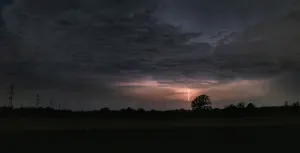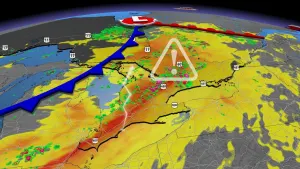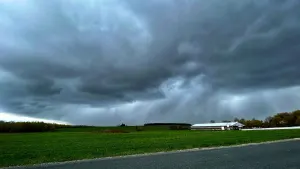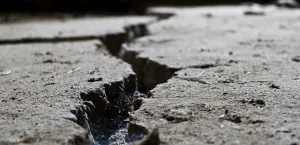
Blobs of an alien world may lurk deep inside the Earth
What sounds like the plot of a sci-fi movie may actually have revealed remnants of the planet that collided with Earth billions of years ago to produce the Moon.
Two continent-sized clumps of rock near Earth's core have remained a mystery for years. Could they be pieces of an alien planet?
Four and a half billion years ago, shortly after the Earth had first formed, a small planet about the size of Mars strayed into its path, resulting in a cataclysmic collision. Scientists call this protoplanet Theia, and its impact fundamentally changed our world.
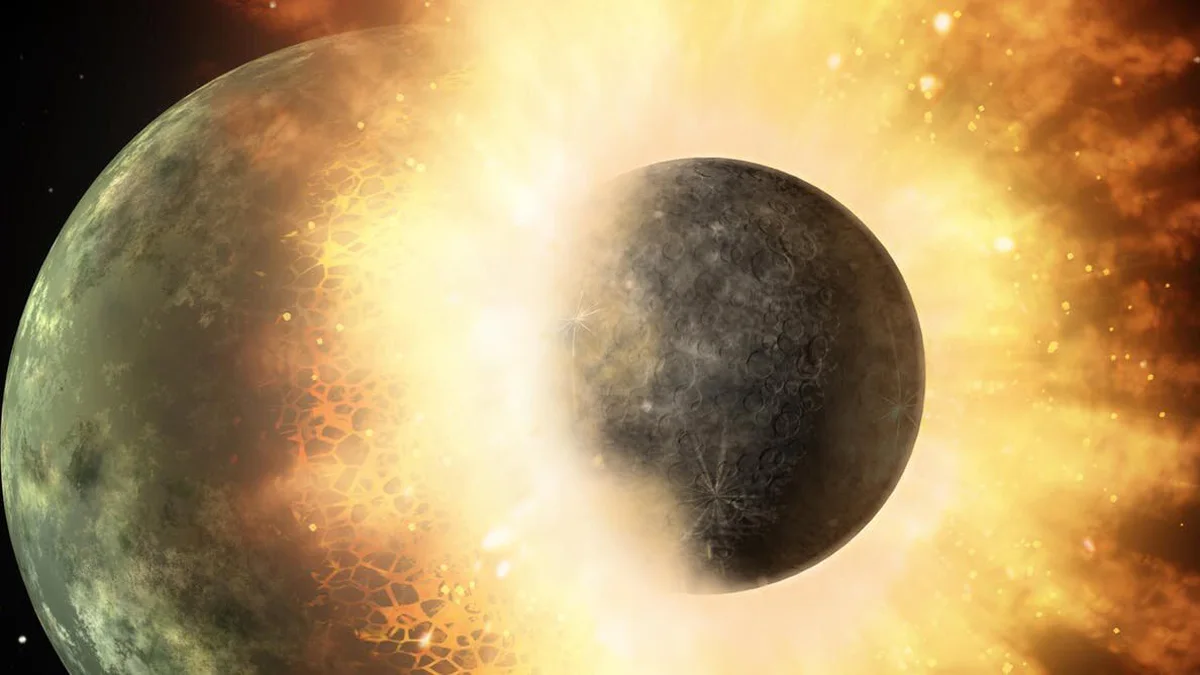
This artist's impression depicts the collision between Earth and Theia, 4.5 billion years ago. Credit: NASA/JPL-Caltech
The collision threw enough material from both planets into space to produce the Moon. The metal cores of Earth and Theia merged into one. Also, according to a new study, as the planets' rocky mantles mixed together, pieces of Theia may have survived, even to this day.
READ MORE: Is an intact piece of protoplanet Theia locked away inside the Moon?
Earth's interior is split into four layers — the crust, the mantle, the outer (liquid) core, and the inner (solid) core. Near the bottom of the mantle are two immense formations, discovered in the 1980s by studying seismic waves sweeping through the planet in the aftermath of large earthquakes. Known as 'large low-velocity provinces' or LLVPs, they stand out from the rest of the material around them because seismic waves travel slower through these regions than anywhere else at that same depth beneath the Earth.
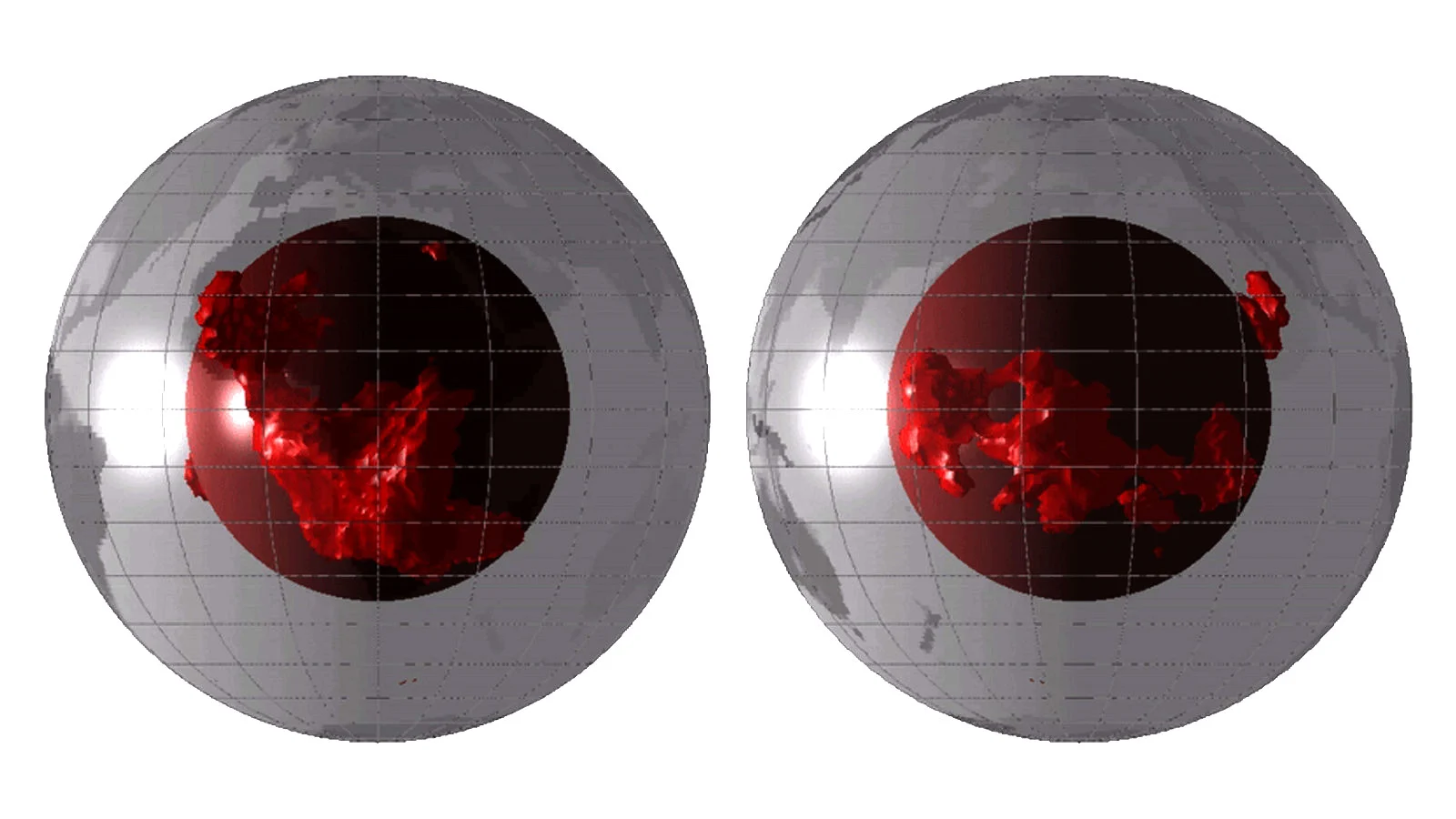
Two views of Earth are shown here, depicting the locations of the two large low-velocity provinces (LLVPs) at the base of Earth's mantle. Credit: Sanne Cottaar (CC BY-SA 4.0)
Over decades of studying how seismic waves travel through Earth, scientists have shown that changes in the speed of the waves point to differences in the composition and density of the rocks they pass through. Thus, these LLVPs — one deep under the continent of Africa and the other spanning the South Pacific Ocean — are something unusual. So far, though, their presence and different composition have largely defied explanation.
Now, an international team of researchers led by Qian Yuan from the California Institute of Technology proposes that the LLVPs could be remnants of Theia's mantle that accumulated deep within the planet over the billions of years since the protoplanet collided with Earth.
"The giant impact didn't melt the whole Earth, it only melted half," Qian Yuan said in a Caltech video detailing the new research. According to Caltech, simulations showed that the energy from the collision with Theia was concentrated in the crust and upper mantle, melting those regions but leaving the lower mantle cooler and solid.
"That allowed some impacted materials to get entrapped into the solid mantle material," Yuan explained.
Working from that assumption and adding that Theia's material would be chemically different from Earth's, Yuan and his colleagues ran computer simulations covering the entire 4.5 billion years of mantle evolution since the giant impact.
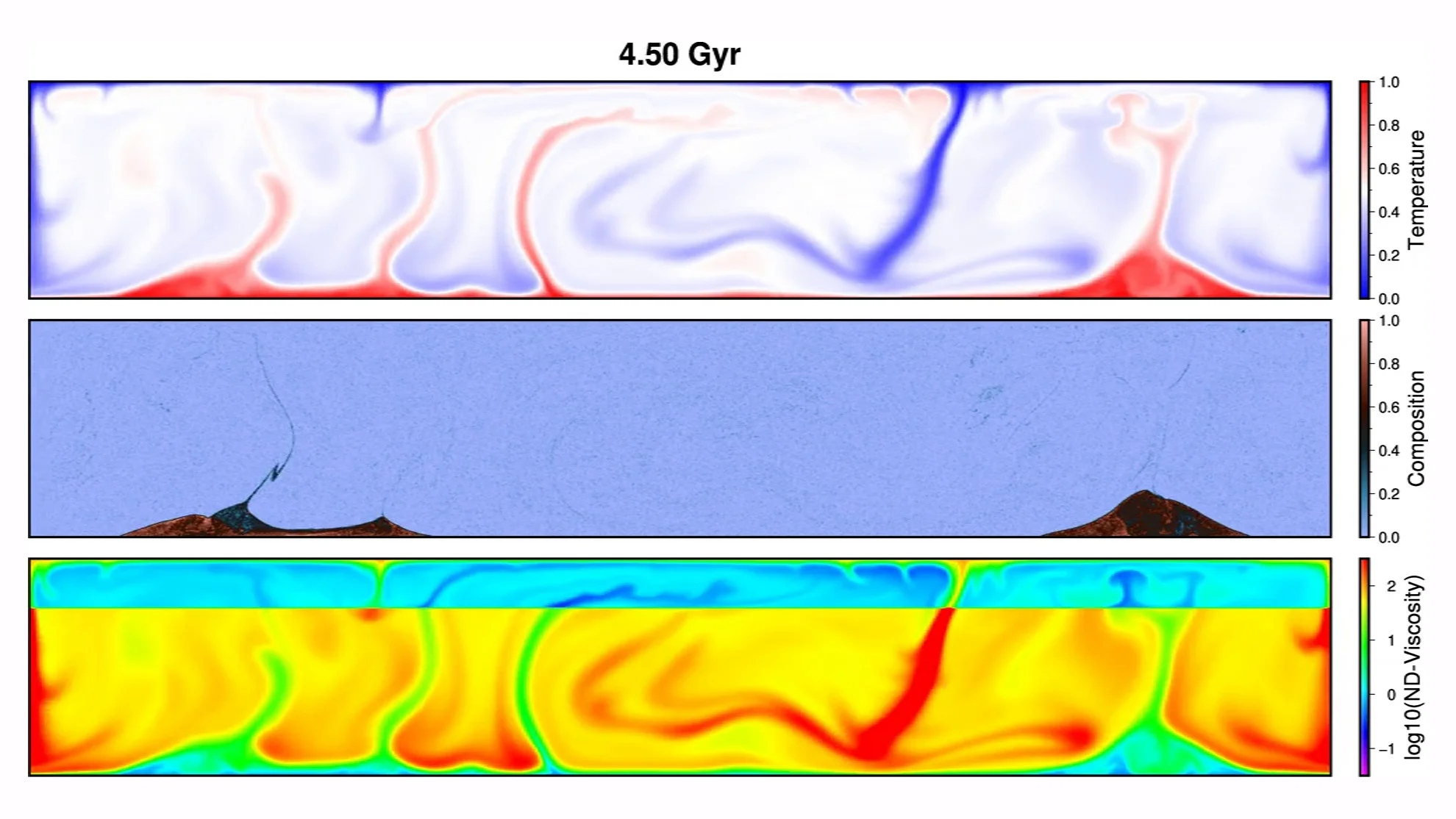
The end result of 4.5 billion years of simulated mantle behaviour are shown here, revealing two large clumps of Theia mantle material that accumulated just above the core over time. Credit: Yuan, Q., Li, M., Desch, S.J. et al./Caltech
The simulations showed that the 'alien' materials from Theia would eventually sink to the bottom of Earth's mantle. Also, remarkably, it collected into two blobs that roughly match the dimensions and positions of the LLVPs seen in seismic data.
If these blobs are, indeed, remnants of an ancient protoplanet, given how long they have been circulating through the mantle, the researchers suggest that they may have had some influences on how our planet developed. This could even include forcing an early start to the process of plate tectonics that has forged and changed Earth's continents over billions of years.
"A logical consequence of the idea that the LLVPs are remnants of Theia is that they are very ancient," coauthor Paul Asimow said in the Caltech press release. "It makes sense, therefore, to investigate next what consequences they had for Earth's earliest evolution, such as the onset of subduction before conditions were suitable for modern-style plate tectonics, the formation of the first continents, and the origin of the very oldest surviving terrestrial minerals."
In addition, the researchers point out that giant impacts such as the one between Earth and Theia are thought to have been common during the final steps of the solar system's formation. Thus, as we explore other planetary bodies, similar remnants of ancient protoplanets may also be found in their interiors.
(Thumbnail image courtesy Hernán Cañellas, and provided by Springer Nature)







